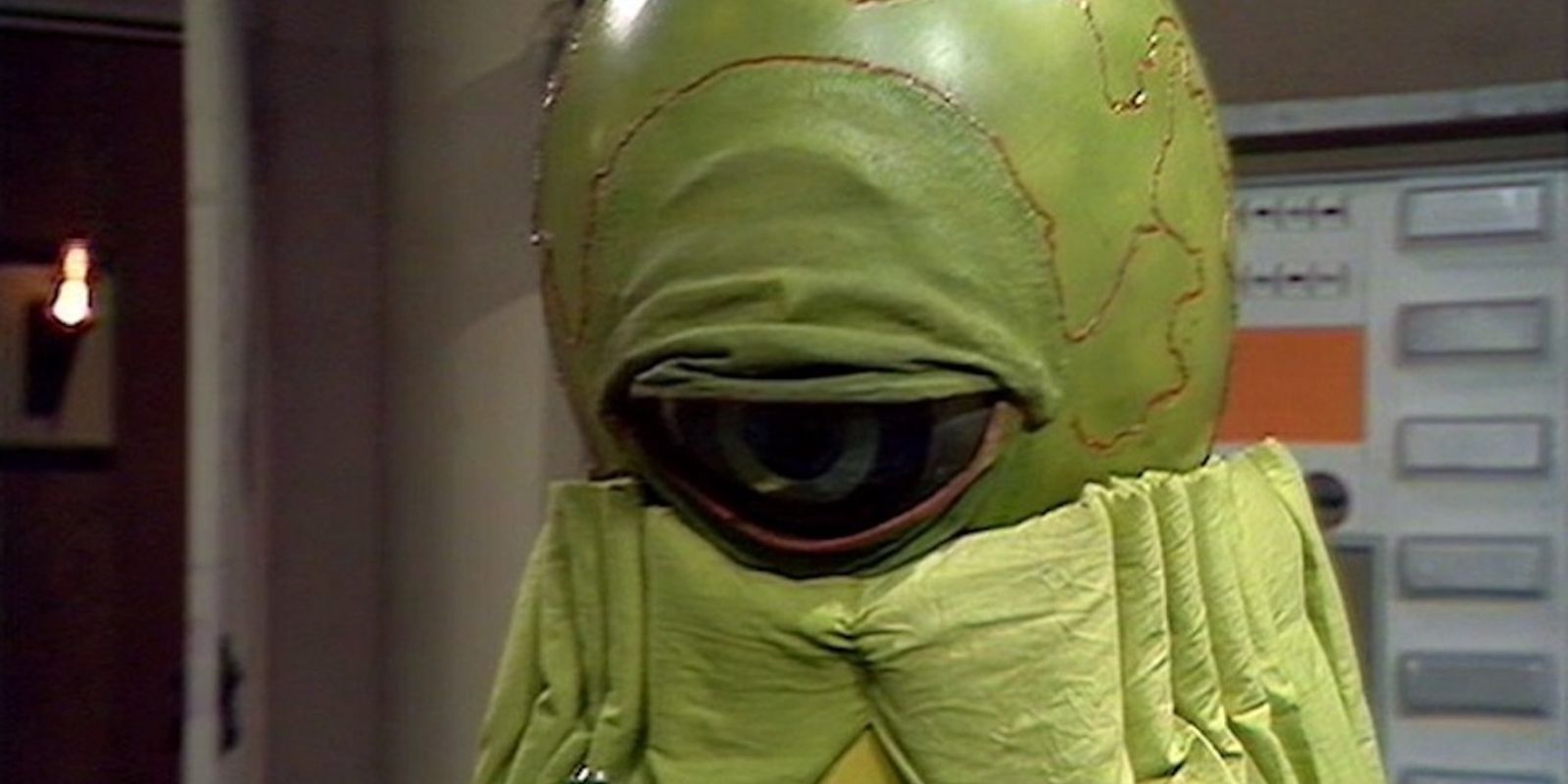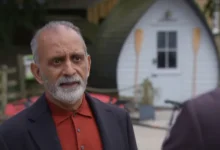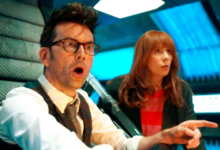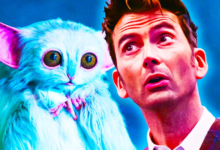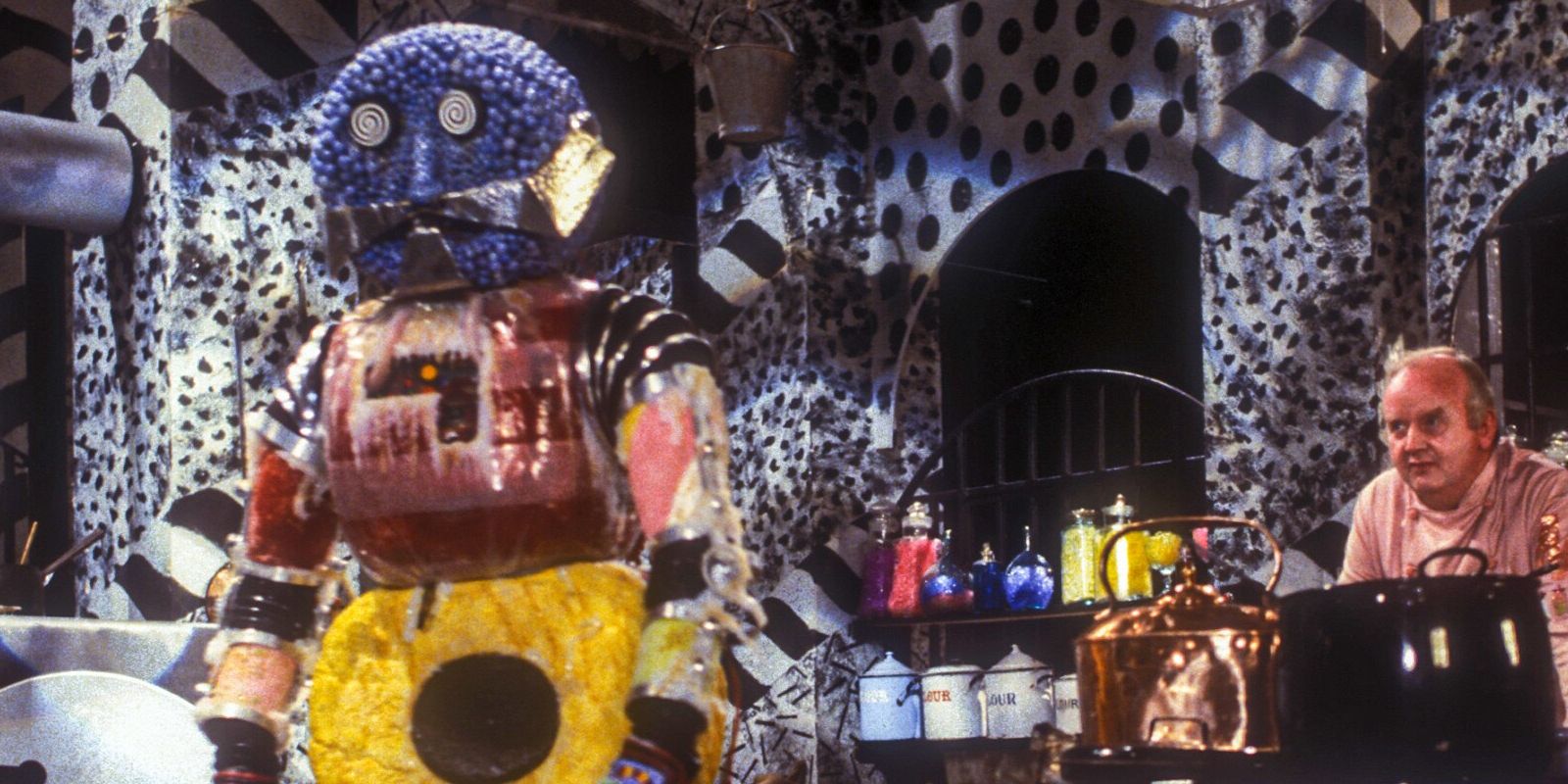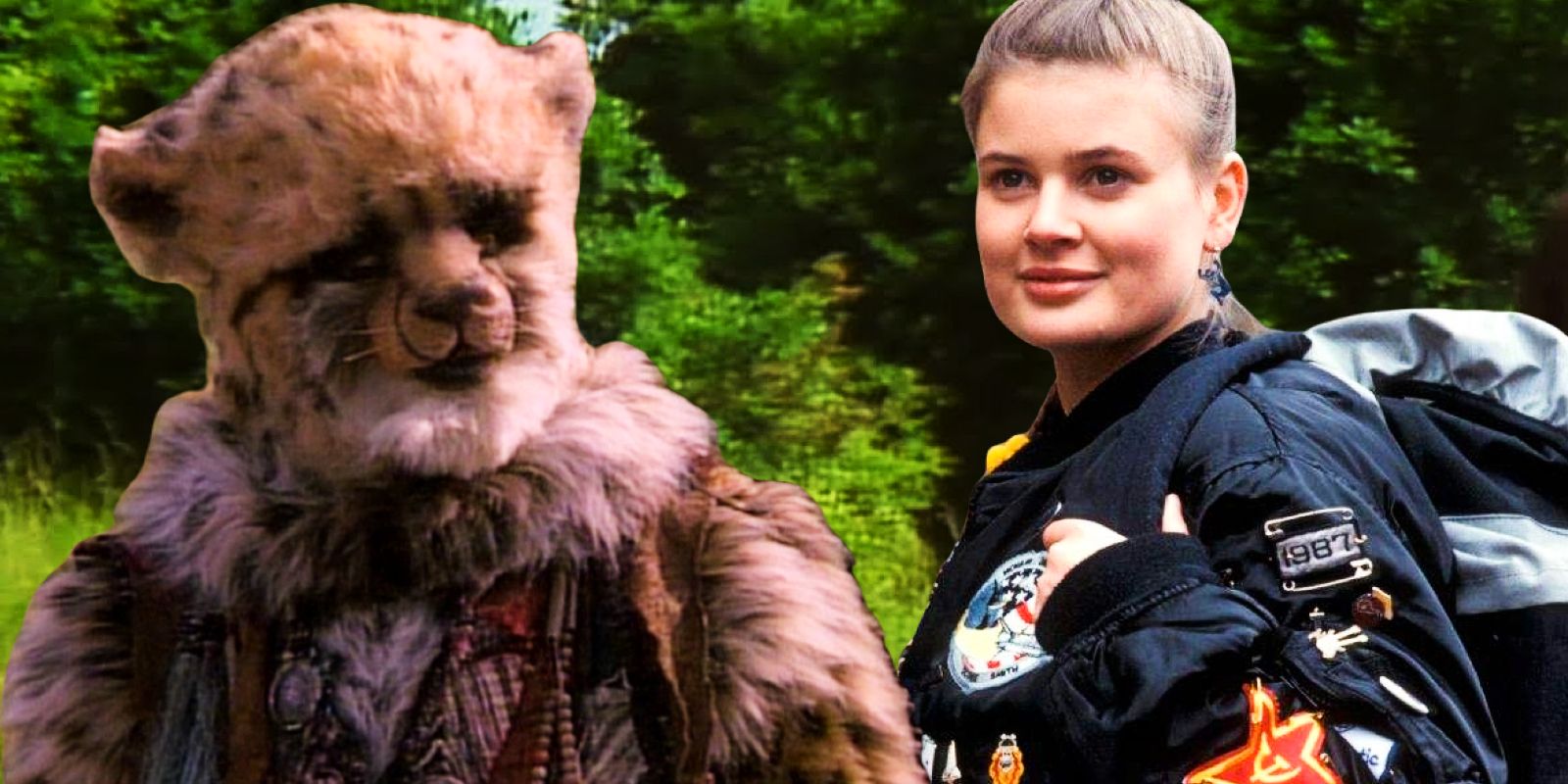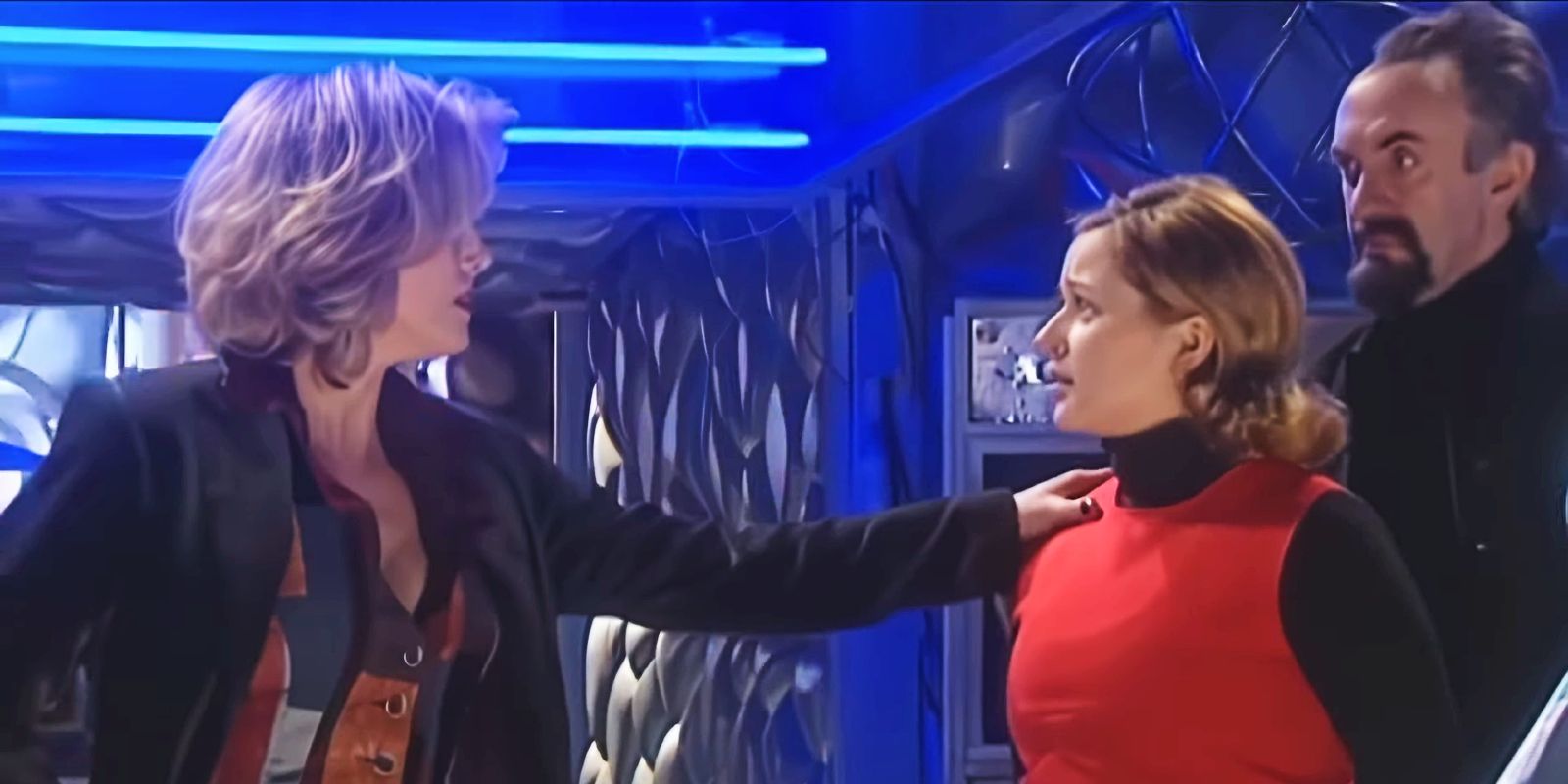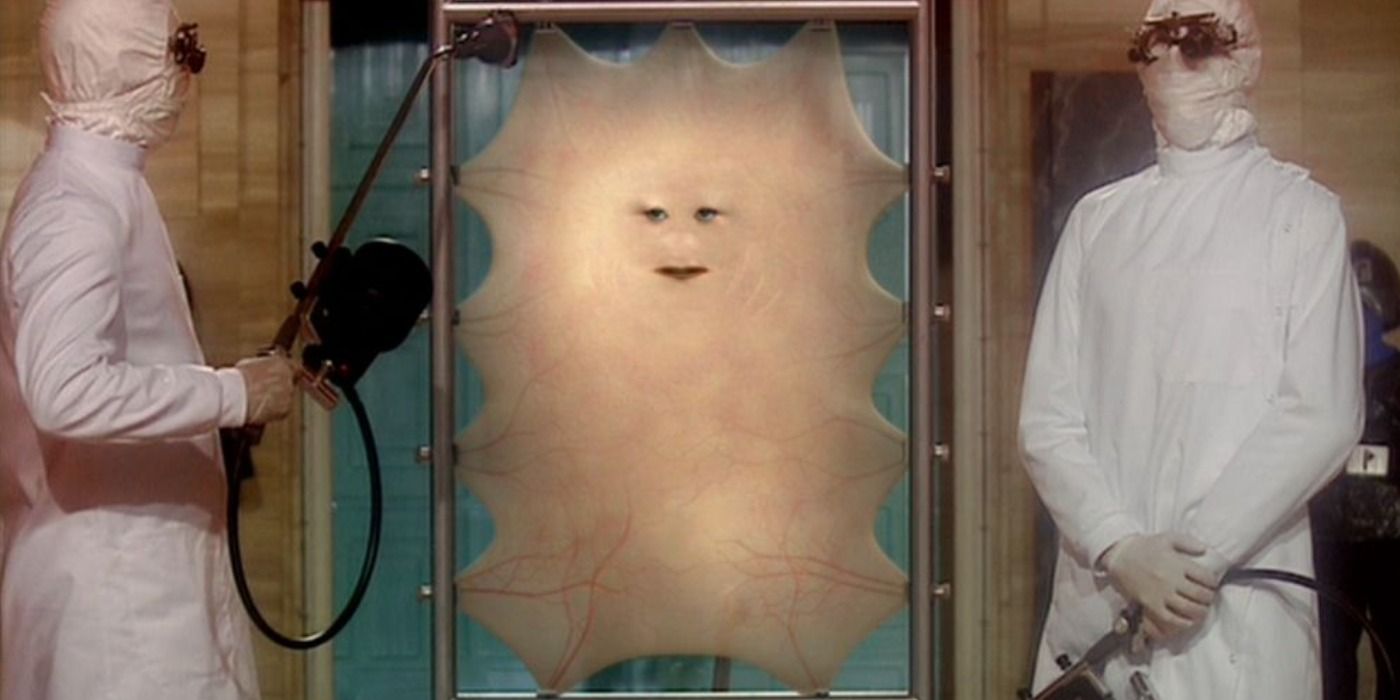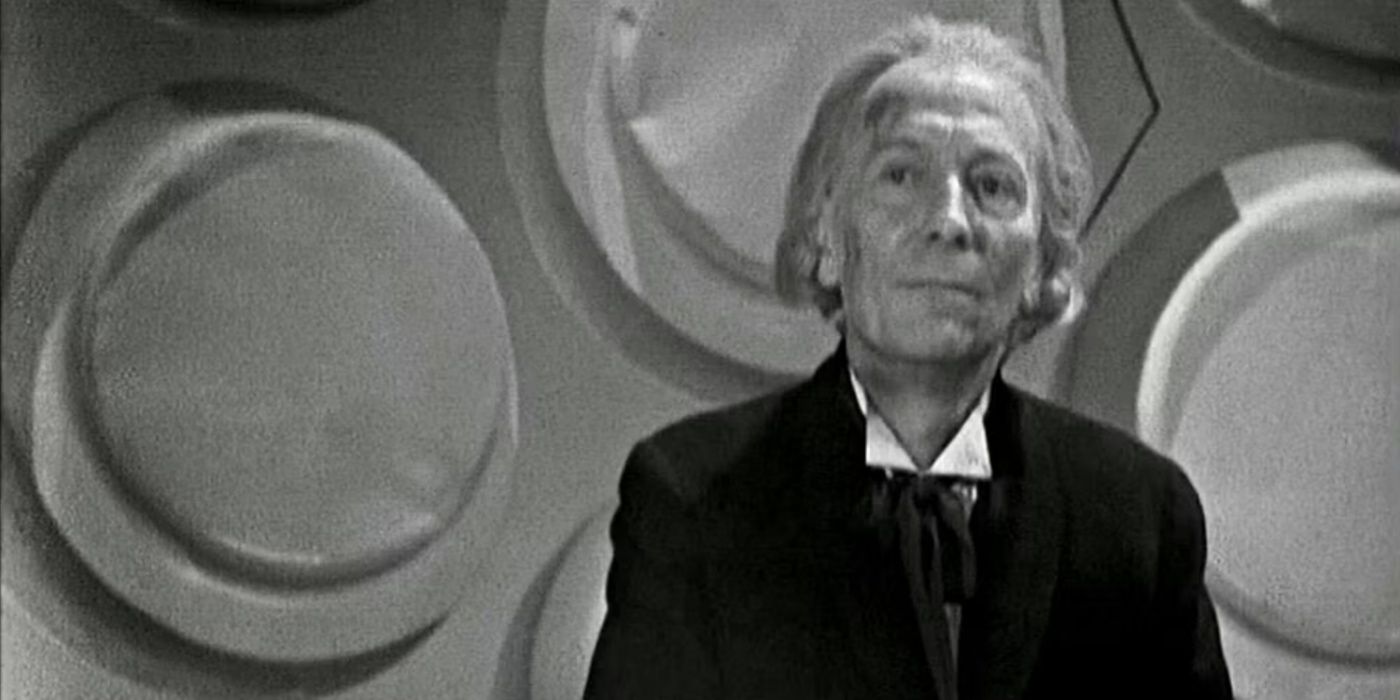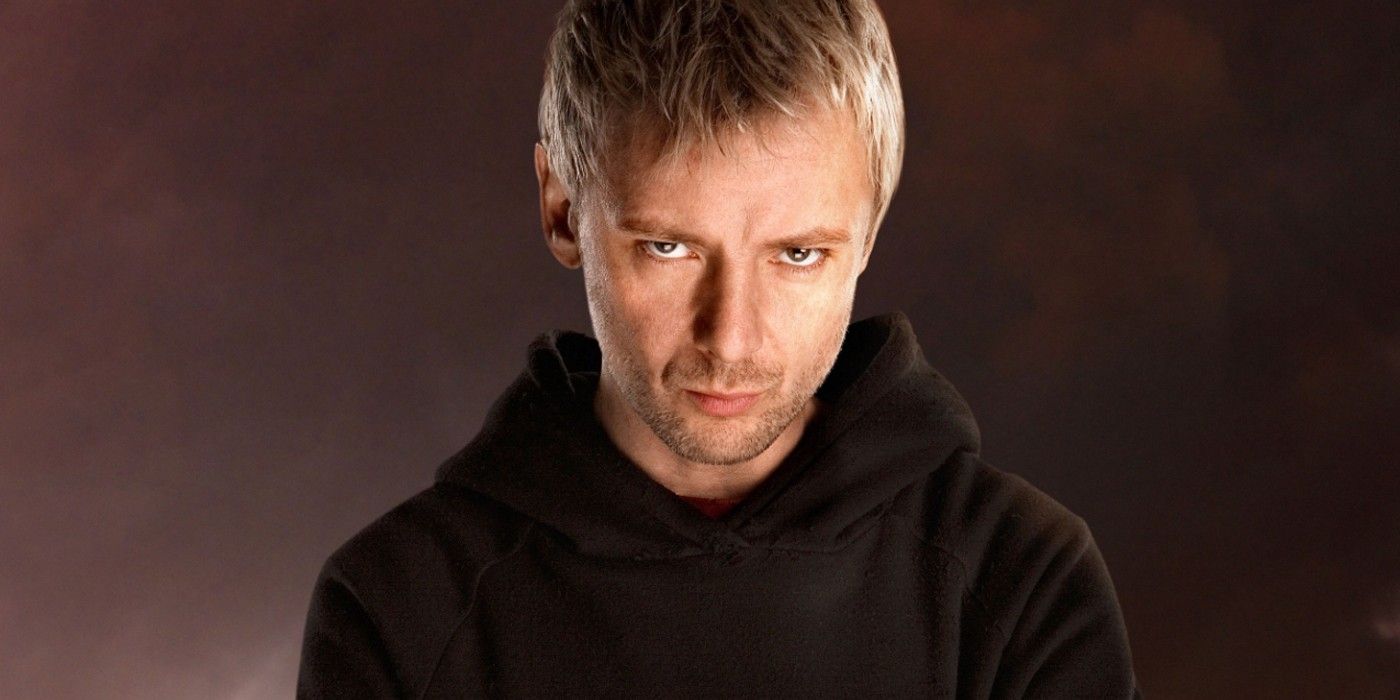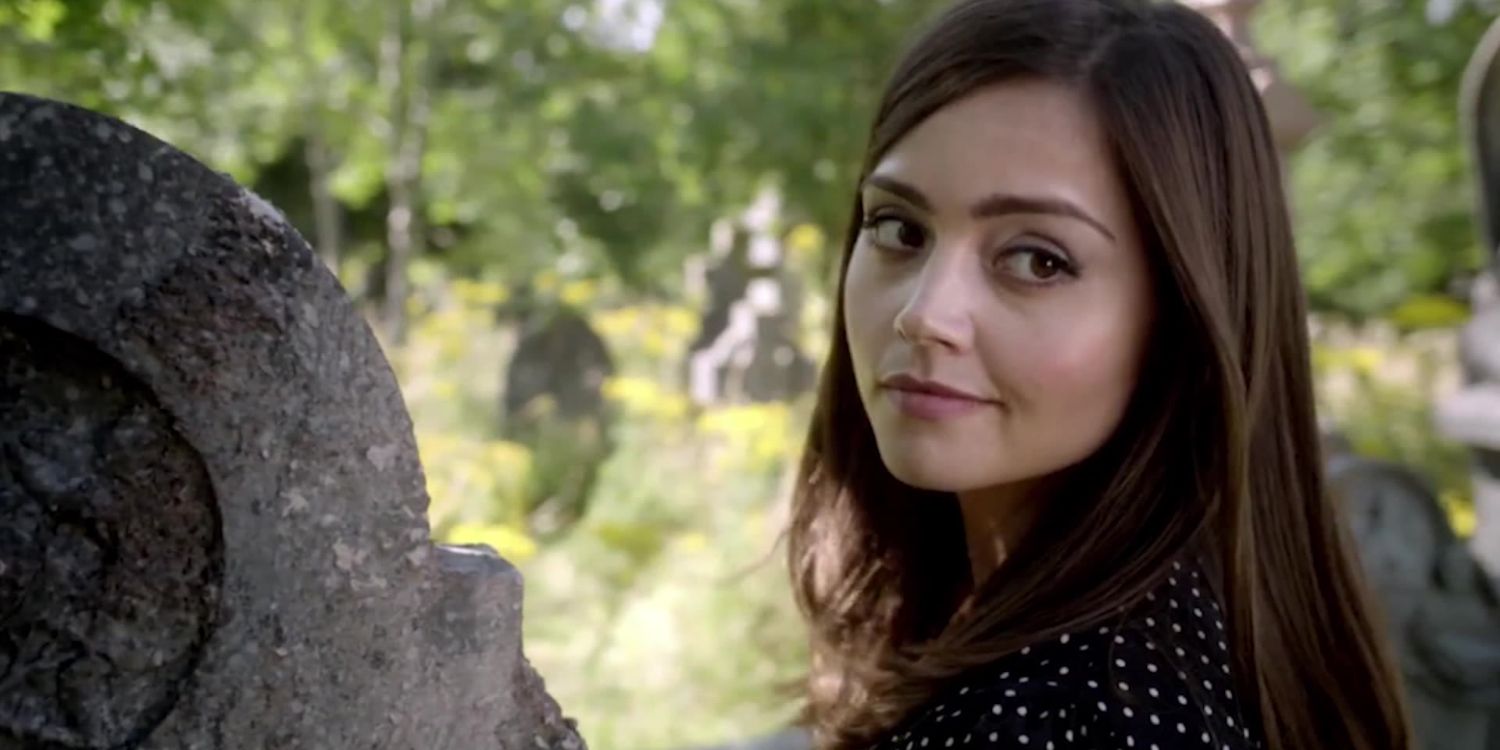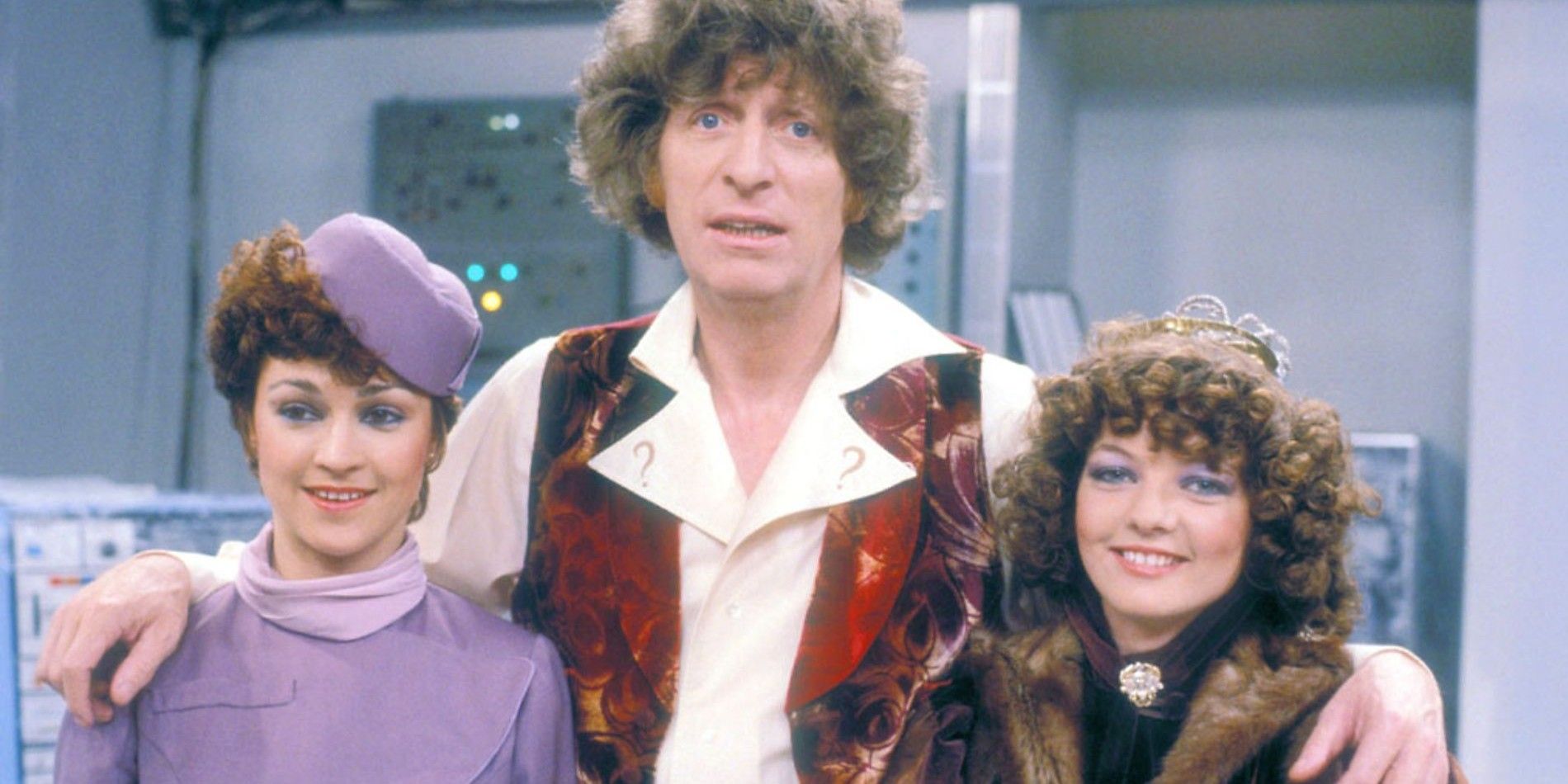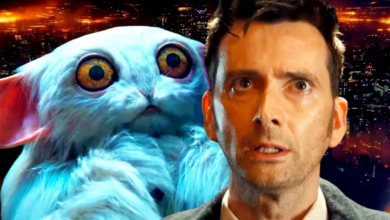Doctor Who’s History Of LGBTQ+ Representation Explained
Though the 60th anniversary took big steps forward, Doctor Who has a long history of including LGBTQ+ representation in TV, books, and audio formats.

Warning: This article contains spoilers for Doctor Who’s 60th anniversary special, episode 1, “The Star Beast.”
Doctor Who has a long history of representing the LGBTQ+ community across visual, written, and audio mediums. The Doctor Who‘s 60th anniversary special, episode 1, “The Star Beast” represents the newest era of Doctor Who filled with enhanced visuals and new characters. The special takes massive steps forward by confirming the Doctor’s pronouns and gender after Jodie Whitakker’s regeneration and including Rose Noble, the trans-nonbinary daughter of Donna Noble. Regardless, this inclusion is nothing new for the Doctor Who Universe (DWU).
Over the past sixty years, Doctor Who has introduced a number of aliens, characters, and stories that make social commentary. Even though it’s campy and whimsical, the show has never shied away from complex topics. The showrunners pushed the topics of gender and sexuality even when it was less socially acceptable to discuss. The ending of the Doctor Who 60th-anniversary special is simply the most recent addition to a long legacy of LGBTQ+ representation.
The Doctor And Jo Discuss Alpha Centauri’s Pronouns
The first instance of Doctor Who discussing pronouns occurred in 1972. During Doctor Who, season 9, episode 5, “The Curse of Peladon,” Jo and The Doctor talk about Alpha Centauri, leading Jo to ask whether the creature is a he or she. The Doctor (in dated terms) explains that Alpha Centauri is intersex and uses “it” as a pronoun. This is proof that the Doctor Who writers and showrunners cared about the LGBTQ+ community back when that kind of decision could have gotten the show canceled.
Doctor Who First Acknowledges The Existence Of The LGBTQ+ Community
The first time Doctor Who acknowledged the LGBTQ+ community in 1988, a victim of the Kandy Man’s fondant surprise genocide wore a pink triangle badge. The Nazi party placed that symbol on gay prisoners and concentration camp victims to identify them. This walks the line between good and bad representation. While this is an important part of history to remember, it’s unfortunate that the first LGBTQ+ representation referenced a horrible real-life atrocity that resulted in the deaths of millions of people.
Ace And Karra Have A Lesbian Romance
In the documentary Cat Flap, writer Rona Munro shared that she infused Doctor Who, season 26, serial 4, “Survival,” with lesbian subtext between Kara and Ace. The two were intended to be attracted to each other. Unfortunately, this representation didn’t land due to Kara’s costume. Additionally, it’s problematic to make the first queer Doctor Who relationship between an animal-like alien and a human, since LGBTQ+ relationships get compared to bestiality by homophobic people.
The Curse Of Fatal Death Includes The Doctor’s First Queer Relationship In The DWU
While the most prevalent example of the Doctor’s sexuality comes from the Thirteenth Doctor, the character’s sexuality was confirmed long before this. Stephen Moffat’s first televised Doctor Who script, “The Curse of Fatal Death,” shows The Doctor in a relationship with a companion named Emma. By the end, the Doctor regenerates into a femme-presenting body, one of the two times a woman played the Doctor before Jodie Whittaker. Regardless, the Doctor still wants to be in the same relationship. While they don’t end up together, it shows that the Doctor has experienced sapphic love before.
Jack Harkness Becomes The Doctor’s First Overtly Queer Companion
While companions like Ace and Adric were meant to be queer, the first companion of the Doctor to be openly LGBTQ+ is Captain Jack Harkness, a pansexual man. This was a massive step forward for Doctor Who because they showed Jack in relationships with people of all genders. He is never pigeonholed into a straight-passing relationship for the comfort of others. Moreover, Captain Harkness went on to lead his own spinoff show, Torchwood, which offered even more queer representation.
Lady Cassandra Reinforces The Trans Villain Trope
While Doctor Who includes many positive moments of sexual representation, their first openly trans character was a massive failure. In Doctor Who, season 1, episode 2, “The End of the World,” Lady Cassandra makes an offhand comment about her life as a little boy. Meanwhile, she plans to undermine the end of the world viewing by destroying the systems protecting Platform One. Unfortunately, by making the first trans character a villain, they reinforced a harmful TV and movie trope.
The Doctor Calls Out Homophobia
In 2011, Big Finish’s audio story The Cold Equations gives the First Doctor a gay companion named Oliver Harper. During this time, homosexuality was a crime in England. Harper struggles with coming out because he doesn’t want the Doctor to make him leave the TARDIS for being gay. When he finally comes out, the doctor calls persecution “society’s crime” instead of Oliver’s. Oliver stays in the TARDIS with the Doctor and Steven, the other companion. This story makes a clear statement that Doctor Who and the Doctor affirms queer identities even if society doesn’t.
Doctor Who Introduces Multiple Minor LGBTQ+ Characters In The DWU
After the decriminalization of LGBTQ+ relationships and identities, Doctor Who had the ability to represent more queer characters. They started by slowly introducing these relationships and identities here and there. This drastically changed when Stephen Moffat became the showrunner of Doctor Who. From 2010 forward, the show began introducing multiple minor queer characters in the DWU. While each instance may not be as notable as other instances of representation, this change showed a normalization of queerness that was much needed on TV and in Doctor Who.
Clara Tells Her Class Jane Austen Is A “Phenomenal Kisser”
In Doctor Who, season 9, episode 1, “The Magician’s Apprentice,” Clara Oswald is teaching an English class and mentions that among her other accomplishments, Jane Austen was, “a phenomenal kisser.” This moment has largely been overlooked as LGBTQ+ representation because multiple sapphic relationships already existed in the DWU by that point. However, Clara’s comment has a hidden significance. From 1988 to 2003, the UK made it illegal to “promote homosexuality” in schools, meaning queer teachers couldn’t mention their identities, relationships, or experiences. This line shows the progression of society because Clara can mention this without getting fired or sued.
Bill Pots Is Doctor Who’s First Full-Time LGBTQ+ Companion
While Captain Jack Harkness was great queer representation, he only spent a small amount of time as the Doctor’s companion. In addition to having one of the best Doctor Who companion debut episodes, Bill Potts was the Doctor’s first full-time LGBTQ+ companion. The show didn’t try to hide or minimize Bill’s identity, instead, introducing it in her very first episode. Moreover, Doctor Who spent just as much time developing Bill’s relationship with Heather as they did with other companion relationships like Clara and Danny. This shows an understanding that queer love stories can be just as compelling and romantic as straight ones.
Torchwood: The Story Continues Introduces The DWU’s First Nonbinary Character
Before Rose Noble appeared in Doctor Who‘s 60th-anniversary special, the DWU only had a few other canonically nonbinary characters. The audio series Torchwood: The Story Continues introduced the first nonbinary character, Orr, in 2017. Orr uses the honorific Mx. and the pronouns they/them. While some characters initially struggle, the team all adapts to Orr’s pronouns, affirming the character’s nonbinary gender identity. This character was a huge step for the DWU since Orr uses the singular they/them, a set of pronouns not often represented in the media.
Yasmine And The Thirteenth Doctor Fall For Each Other
From the first time they meet, there’s immense chemistry between Yasmin “Yaz” Kahn and Thirteen, who has the ship name Thasmin. Eventually, Yaz admits her feelings for the Doctor. The Doctor reciprocates but decides not to pursue a relationship because of the pain of past Doctor-companion relationships. However, the Doctor confirms that it would be with Yaz if any relationship were pursued. The representation was mostly great; however, ultimately, Doctor Who failed queer fans by not giving Thasmin an official relationship or kiss like the other Doctor-companion pairings. The pair also have one of the most emotional modern companion exits in Doctor Who because Thasmin is so great together.
Tales of the TARDIS Makes Tegan And Nyssa Life Partners
Before the Doctor Who 60th anniversary special, the most recent addition to the LGBTQ+ representation occurred in the spinoff Tales of the TARDIS. When Tegan meets Peter Davison’s Fifth Doctor in the Memory TARDIS, she confirms that she was in bed with Nyssa before she appeared there. This was Doctor Who‘s confirmation of the old fan theory that Nyssa and Tegan loved each other. By making the two life partners, LGBTQ+ fans of the older Doctors get representation they missed out on because of the time at which the original Doctor Who episodes came out.
